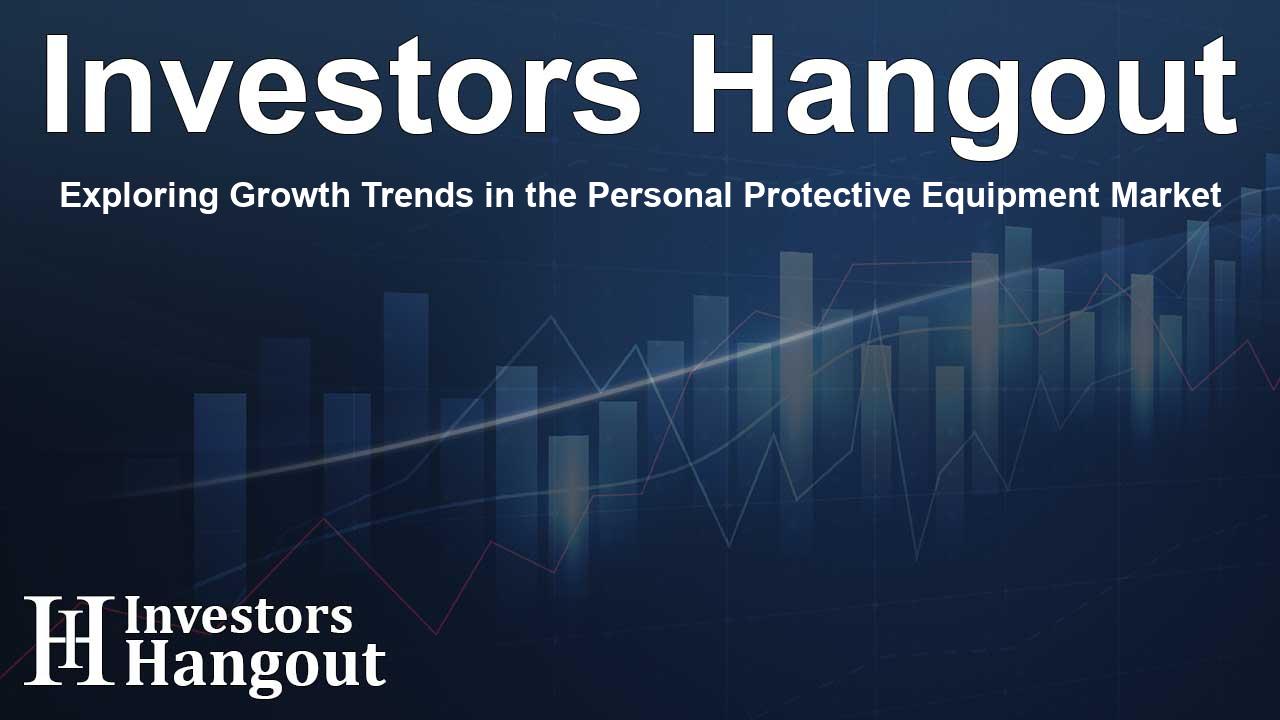Exploring Growth Trends in the Personal Protective Equipment Market

Understanding the Personal Protective Equipment Market
The Global Personal Protective Equipment (PPE) market is rapidly evolving, showing a promising valuation of USD 56.64 billion recently and projected to reach an impressive USD 77.66 billion by 2030. This growth is indicative of a compound annual growth rate (CAGR) of 5.49% from 2025 to 2030. The increasing emphasis on workplace safety, driven by stringent regulations and the expansion of high-risk industries, is the primary catalyst for this surge in demand.
Rising Demand Due to Safety Protocols
As industries such as manufacturing, construction, healthcare, transportation, and oil & gas become more safety-conscious, the need for advanced PPE is becoming more pronounced. Companies are striving to create a safer working environment for their employees to comply with regulations while elevating operational efficiency.
Innovations in Personal Protective Equipment
The PPE sector is currently experiencing substantial transformations spurred by technological advancements, sustainability efforts, and significant investments in R&D. Businesses are focusing on enhancing product performance, environmental compliance, and longevity of their equipment. Innovations involving the Internet of Things (IoT), artificial intelligence (AI), and wearable technology are being integrated into PPE, making it essential across industries for monitoring environmental hazards and ensuring worker protection.
Key Players and Insights
Prominent players in the PPE market, including Honeywell International Inc., 3M Company, and DuPont de Nemours, Inc., are key contributors to innovations. They are investing in developing new materials and technologies tailored to industry demands. The competitive landscape comprises several other notable companies that share the commitment to enhancing safety protocols.
Market Segmentation and Dynamics
The global PPE market can be categorized based on product types such as hand & arm protection, protective clothing, and respiratory protection. Among these segments, hand & arm protection is anticipated to lead in market value, especially due to its application across various industries like manufacturing and healthcare where employees face mechanical and chemical risks.
End-Use Industries Driving Growth
Manufacturing remains the largest end-user in the PPE market, owing to the inherent risks associated with diverse operations. Workers generally encounter heavy machinery, hazardous materials, and extensive noise, necessitating robust protective measures. To mitigate these hazards, stringent safety regulations are continuously shaping this sector's PPE demand.
Effectiveness and Compliance Measures
The North American market is anticipated to register a moderate CAGR of 5.28% fueled by rigorous occupational safety standards. Agencies emphasize high-quality workplace safety measures which in turn, are advancing the adoption of personal protective equipment across the region.
Current and Future Market Trends
The focus on environmental sustainability is progressively influencing the PPE landscape. Buyers are increasingly looking for eco-friendly options, prompting manufacturers to reconsider their production methodologies. Future developments are expected to emphasize the synthesis of comfort, multi-functionality, and eco-conscious materials in PPE products, aligning with broader sustainability goals.
Investment in Research and Development
Investments in R&D are paramount for ushering in the next generation of PPE. Companies are progressively allocating funds to craft innovative solutions that not only meet regulatory standards but exceed safety expectations. Industry players are focusing on collaborative partnerships to drive advancements in personal protective equipment technology.
Conclusions on Market Potential
The Personal Protective Equipment market is set for expansive growth, driven by both necessity and innovation. With a steady rise expected in diverse sectors, organizations must remain vigilant in adopting cutting-edge equipment and practices to avoid risks. As safety regulations evolve, the market will continue to adapt to provide solutions that cater to evolving industry needs.
Frequently Asked Questions
What is the projected value of the personal protective equipment market by 2030?
The market is projected to reach USD 77.66 billion by 2030.
Which segment is expected to grow the fastest within the PPE market?
Hand & arm protection is expected to be the fastest-growing segment in value.
What drives growth in the PPE market?
Increased safety regulations and the expansion of high-risk industries drive growth.
Which region is leading in PPE market growth?
North America is currently the leading market for personal protective equipment.
What technologies are being integrated into modern PPE?
IoT, AI, and wearable technology are key innovations in modern PPE.
About The Author
Contact Owen Jenkins privately here. Or send an email with ATTN: Owen Jenkins as the subject to contact@investorshangout.com.
About Investors Hangout
Investors Hangout is a leading online stock forum for financial discussion and learning, offering a wide range of free tools and resources. It draws in traders of all levels, who exchange market knowledge, investigate trading tactics, and keep an eye on industry developments in real time. Featuring financial articles, stock message boards, quotes, charts, company profiles, and live news updates. Through cooperative learning and a wealth of informational resources, it helps users from novices creating their first portfolios to experts honing their techniques. Join Investors Hangout today: https://investorshangout.com/
The content of this article is based on factual, publicly available information and does not represent legal, financial, or investment advice. Investors Hangout does not offer financial advice, and the author is not a licensed financial advisor. Consult a qualified advisor before making any financial or investment decisions based on this article. This article should not be considered advice to purchase, sell, or hold any securities or other investments. If any of the material provided here is inaccurate, please contact us for corrections.
